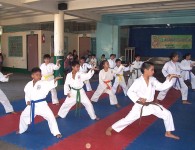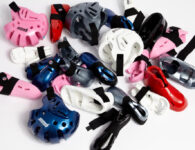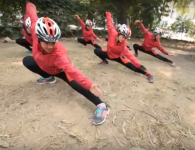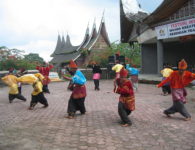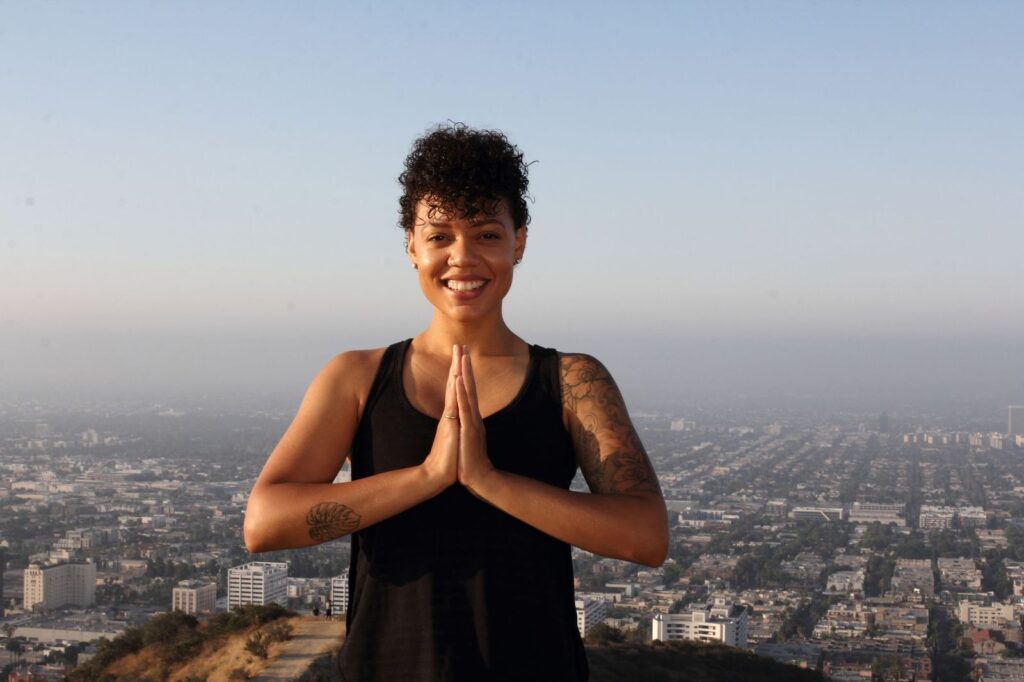
Summer’s almost over, but outdoor martial arts training season is still going strong!
With gyms still closed or offering limited hours and classes in many parts of the world, outdoor martial arts classes provide a welcome option for students who are looking for a break from their at-home solo training. In places where gyms are open, they also offer a great alternative to anyone who can’t or doesn’t feel comfortable with returning to indoor training — or for anyone who is looking for a way to shake up their regular routine. As long as weather and local health conditions permit, there’s no reason you can’t keep your outdoor martial arts training up well into the fall. Or even beyond that, if you live in a warm climate — or you’re willing to get creative!
So let’s talk about how to get the most out of your outdoor martial arts classes. In our last blog, we covered what martial arts gear to pack for an outdoor training session. This time, we’re going to tackle the training itself. These five tips will keep you as safe and as productive as possible when you’re training outside the gym and thinking outside the box.
Practice good hygiene.
Good hygiene has always been important for martial artists, and it’s more important than ever now. For martial arts students, practicing good hygiene shows respect for your own health, and for your training partners. For martial arts instructors, keeping yourself and your gear clean doesn’t just help protect you and your students, it also sets a good example for them in their martial arts careers and lives. For more information on personal hygiene, see our blog post, “Martial Arts Hygiene: How to Protect Yourself and Show Courtesy to Your Training Partners.” For tips on proper martial arts gear care, check out “How to Clean and Care for Your Martial Arts Gear.”
Practicing proper hygiene and gear care during and after outdoor martial arts training can be more difficult, but we also have tips on what to pack in your gear bag to help you stay as clean and healthy as possible until you can reach a sink and a shower.

Stay up to date on local conditions.
This counts for weather and current public health updates. If you’re teaching outdoor martial arts classes, it’s important for you to make sure that your sessions will be as safe as possible for your students. A little rain never hurt anyone, but it’s not fun or wise to try to train in a thunder storm, a heat wave, or other extreme weather. It’s also essential that you stay up to date on the latest health data and rules in your area, to make sure that you are your students will be following guidelines and doing your best to protect each other’s wellbeing.
Staying informed is also important for students taking outdoor martial arts classes, especially if those who have any specific health or safety considerations. A martial artist with asthma, for example, will need to be especially careful about conditions that might trigger an attack or restrict your breathing. Someone with allergies might need to train lightly on high pollen days, or avoid them altogether.
For instructors and students alike, staying open, honest, and proactive about all of the above will make for a much a safer and a more supportive training environment.
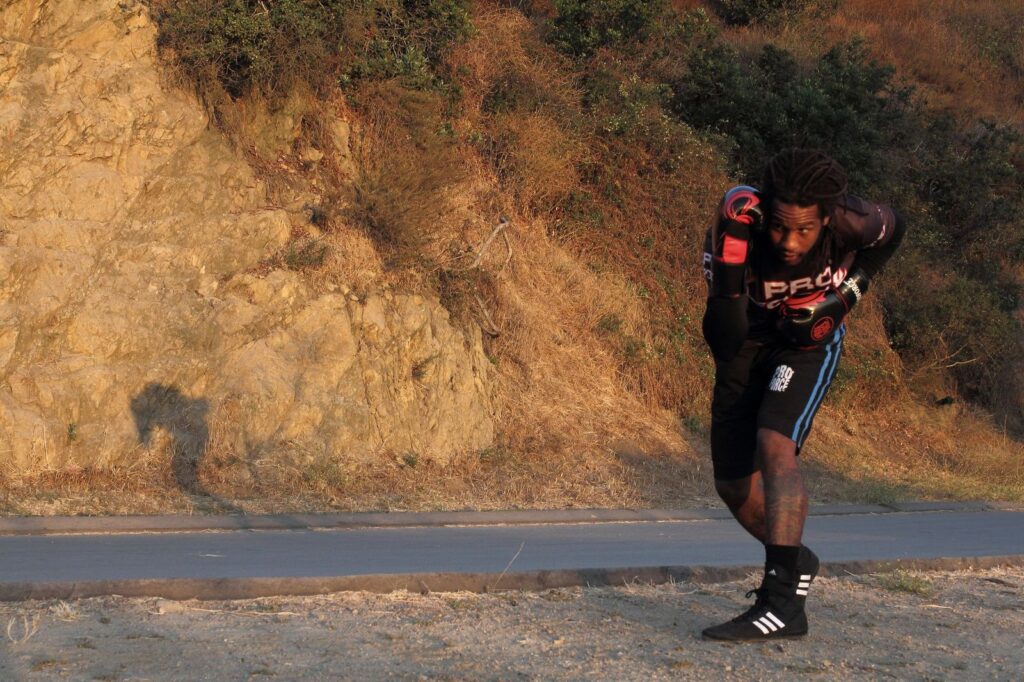
Be flexible.
With so many variables involved in outdoor martial arts training, it’s vital for everyone who is participating to remain flexible and roll with the punches. For instructors, this includes planning rain dates for every session and using them as necessary, and having a comprehensive cancellation policy that allows students to stay home when they’re not felling well or otherwise able to attend. For students, that includes monitoring your own health to make sure you’re not putting yourself or your training partners at undue risk, and remaining understanding when your instructor and training partners need to reschedule for health and safety reasons.
In addition to safety, being flexible in your outdoor martial arts training also means being open to new experiences. If your original training location doesn’t work out, consider researching and testing out new places. If it’s too hot to go all out, dream up new drills that focus on technique over conditioning. If you can’t set up all of the martial arts gear you’ll need for a specific drill or training, improvise with what you have. Or make your own gear. Think of it as a new challenge in your martial arts career. And an opportunity to have some fun with your training.
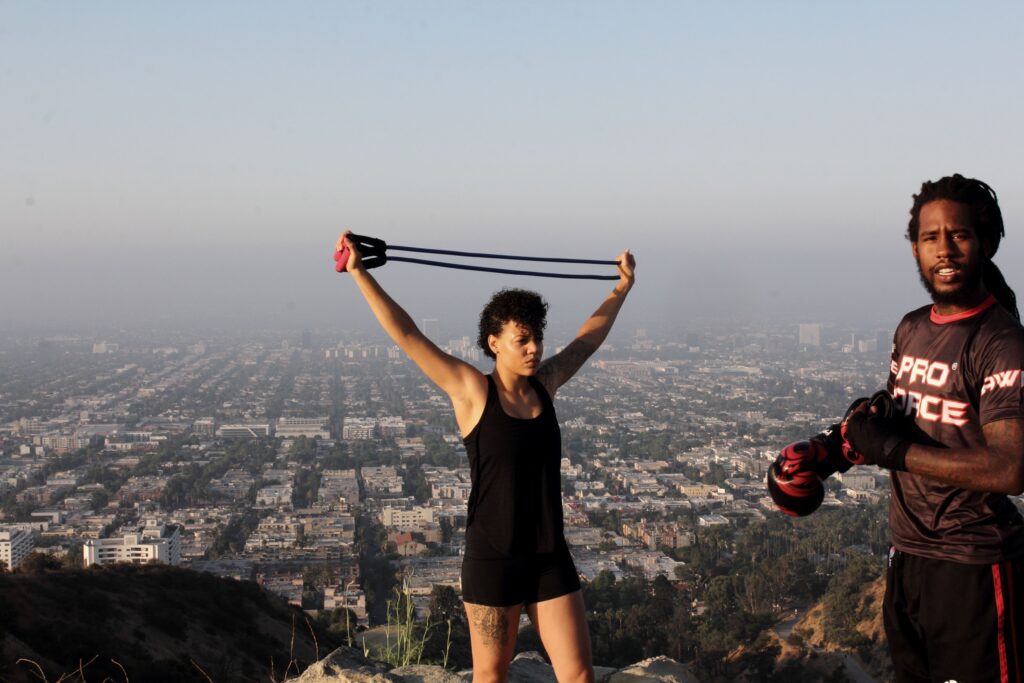
Establish clear boundaries and instructions.
In addition to keeping everyone safer and healthier, well-established training zones can make your whole outdoor martial experience better. If you know exactly where and how you’re supposed to train, you can focus on the techniques themselves instead of worrying about running into anyone or anything.
Once you’ve picked a spot for your outdoor training, it can be helpful to rope or tape off the boundaries of your training space. This will help your students and training partners stay in a range that won’t disturb anyone else using the space, and prevent them from stumbling into areas that haven’t been cleared of rocks, twigs, and other small hazards. If you’re social distance training, it’s also a good idea to mark out clear areas for each student that are spaced at least six feet apart. Setting up separate mat stations, or marking circles with tape, ropes, or even jump ropes or handwraps are all great ways to establish clear visible boundaries. Once everyone can see exactly where they’re supposed to be, you’ll be ready to get to the good stuff.
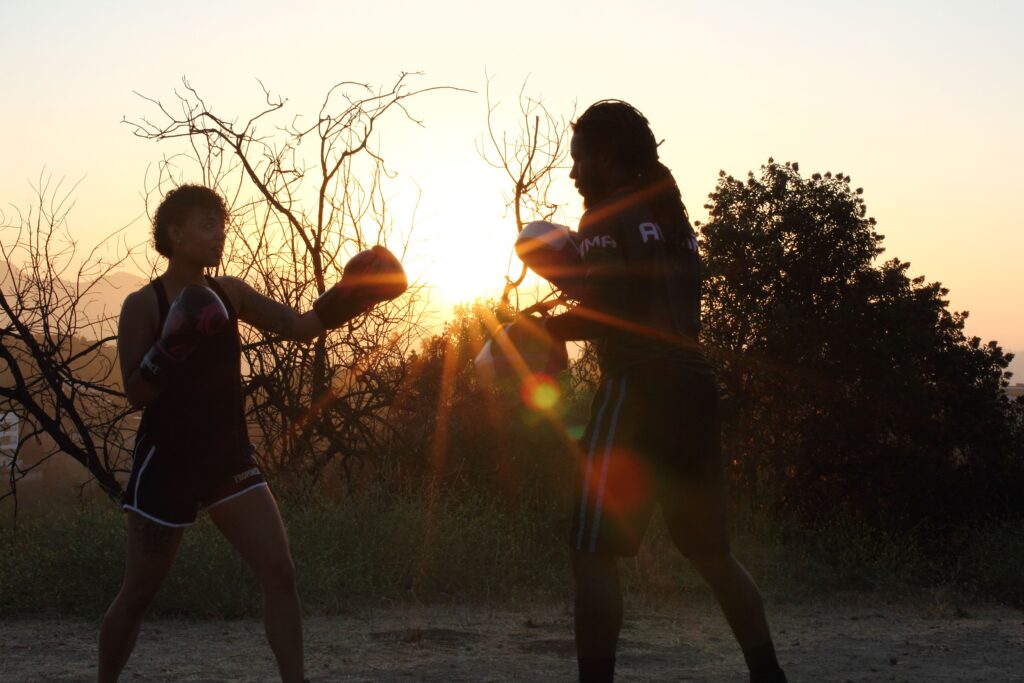
Get creative.
While it’s true that most of us would probably prefer to be training inside with a gym full of martial arts equipment in better circumstances, that doesn’t mean our outdoor martial arts training needs to be a consolation prize. Instead of trying to adapt your indoor training for the outdoor world, why not try to come up with new drills and exercises that make the best use of your surroundings? Being able to adapt to your environment is an important skill for any martial artist, and now is a great time to sharpen it!







